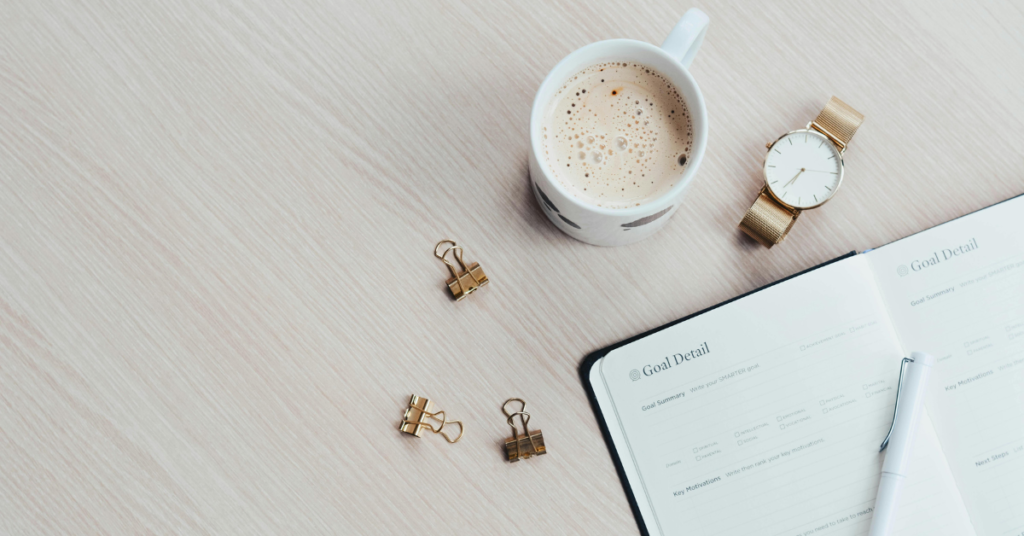A planner is more than just a tool to keep track of meetings or appointments. It can be your guide to setting and achieving both personal and professional goals. We, DailyWealthPaths, will show you how to use your planner to map out clear goals, break them down into manageable tasks, and track your progress.
1. Start with Clear, Measurable Goals
Instead of writing “Get fit,” make it measurable, such as “Exercise 3 times per week for 30 minutes.”
- Tip: Use the SMART framework (Specific, Measurable, Achievable, Relevant, Time-bound) to write down your goals in your planner. For example, under the “Goals” section of your planner, write, “Run a 5k by the end of December.”
2. Break Down Long-Term Goals into Weekly and Daily Tasks
If your long-term goal is to save $5,000 by the end of the year, break it down into monthly savings goals. Then, break that further into weekly budgeting tasks.
- Tip: In your physical or digital planner, set weekly check-ins where you review your progress. For instance, allocate time every Monday to review savings or spending habits.
3. Use a Goal Tracker in Your Planner
Many physical planners come with goal-tracking pages or sections. For digital planners like Notion or Google Keep, you can create templates to track progress.
- Tip: Color-code different tasks based on priority or deadlines to visualize your progress more easily. A habit tracker is another great way to monitor your progress toward daily or weekly tasks, such as drinking 8 glasses of water or reading for 15 minutes each day.
4. Review and Adjust Your Goals Regularly
At the end of each month, take time to review what worked and what didn’t. Did you meet your weekly goals? What do you need to adjust for next month?
- Tip: Have a “Reflection” section in your planner where you can note the successes and challenges you encountered. For instance, you could write, “Met my fitness goals but struggled with meal prepping.” Use this to adjust your schedule for next month.
5. Celebrate Small Wins Along the Way
If your goal is to run a marathon in six months, celebrate milestones such as completing your first 5k or sticking to your running plan for a month.
- Tip: Create a rewards system within your planner. For every small goal you complete, set a reward, like a treat or a day off.
6. Use a Vision Board or Goal Mapping Section
Some people find it helpful to create a vision board or map out goals visually. Use stickers, images, or drawings in your physical planner, or use apps like Trello to create digital boards for each goal.
- Tip: Dedicate a part of your planner specifically to long-term vision goals, whether it’s career aspirations, lifestyle changes, or personal development.
DailyWealthPaths Recommended Planner
If you’re considering a physical planner to help track your goals, we highly recommend the Clever Fox Planner! Not only is it sleek and stylish, but it also includes goal-tracking sections, habit trackers, and a review system for both your weekly and monthly progress. It’s the perfect companion for anyone serious about staying organized and achieving their goals. Check it out here for more details and color options!
Your planner can be an incredible resource for achieving your goals when used effectively. By setting clear, measurable goals and breaking them down into smaller steps, you can stay organized, track progress, and make consistent strides toward success. Whether you’re using a physical or digital planner, consistency and regular reviews are key to staying on track. So grab your planner and start mapping out your path to success today!

